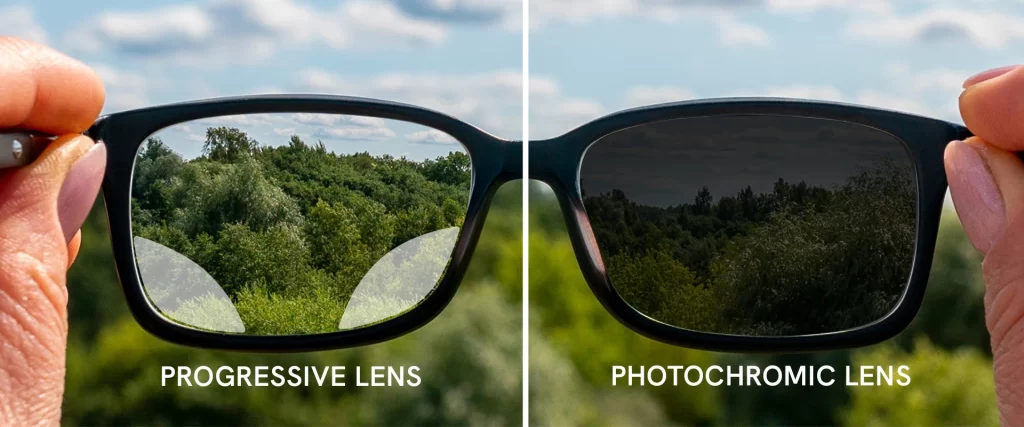
Saville Row at EO: Harry Potter Frame Warwick Brings Back the Magic
Are you still waiting for your Hogwarts letter? Whether you’ve journeyed through the Harry Potter

Have you ever tried to shop for prescription glasses at an optical store, and then the salespeople suddenly started explaining to you the various types of lenses you can upgrade to so your eyes will be extra protected from the harmful blue light from both artificial light and sunlight?
This blog will walk you through the different kinds of eyeglass lenses and their differences. But first, you must learn about UV and blue light and their negative effects on our eyes.
Blue light is a short wavelength found in sunlight and artificial light sources such as computers and fluorescent bulbs. This light produces high energy, which is considered damaging since it can pass through the cornea and directly reach the retina, leading to eye strain, eye fatigue, and dryness.
UV rays also come from the sun and man-made sources, including tanning beds and black lights. UV rays are categorized into three types: UVA, UVB, and UVC. Their effects range from sunburn to skin cancer and eye cataracts.
A multicoated lens consists of three to four coatings that are significant in providing maximum protection for the eyes. These coatings primarily include scratch-resistant, anti-glare, and UV protection, making the mutilated lens one of the most functional types of glasses.
Among the different types of eyeglass lenses for glasses, this particular one can 100% block UVA and UVB rays up to 420 nm emitted by gadgets, computer screens, light bulbs, and the sun. UV 420 protects against blue light, UV rays, and a broad spectrum of light, making it an ideal choice for people who experience long hours of exposure to gadgets as well as those who stay outdoors.
It is designed to focus on reducing electromagnetic radiation from computers, smartphones, and televisions. This feature is necessary for preventing eye strain, headaches, and eye fatigue.
Anti-radiation is the perfect choice if you prefer indoor activities, such as watching television, playing video games, or engaging in anything screen-related.
This lens material for glasses provides maximum blockage from UV rays, giving excellent eye protection. With its thin and impact-resistant features, the polycarbonate lens is perfect for sports glasses and kids since it is less prone to breakage. Additionally, this lens can be customized, allowing wearers to request additional coatings such as anti-glare.
The photochromic lens is a type of lens that transitions from clear to dark when exposed to sunlight. This feature prevents wearers from juggling between a pair of eyeglasses and tinted sunglasses.
In addition to its practicality, a photochromic lens also provides daily protection against UV rays, making it ideal for both indoor and outdoor activities.
Reading glasses are non-prescription lenses that address presbyopia, an age-related vision problem that affects people aged 40 and up. This condition occurs when the eyes lose the ability to see near objects clearly, making simple tasks such as reading and sewing challenging, even with prescription glasses.
A progressive lens is a multifocal lens that corrects multiple vision problems in one wear. Providing more than one area of focus, a progressive lens can help an individual see up-close tasks like reading, middle-distance tasks like watching, and far-distance tasks like driving.
Now that you know the different types of eyeglass lenses, it will be easier for you to purchase the perfect pair. While you may use this blog as a helpful guide, it is still advisable to visit the nearest eye clinic and have your eyes checked.
Check out our selection of eyeglasses both on the website and in any of our branches nationwide.

Are you still waiting for your Hogwarts letter? Whether you’ve journeyed through the Harry Potter

Have you experienced seeing squiggly lines or specks in your field of vision despite them

Beyond Her Physicality It’s probably safe to assume that women have those days. She rolls